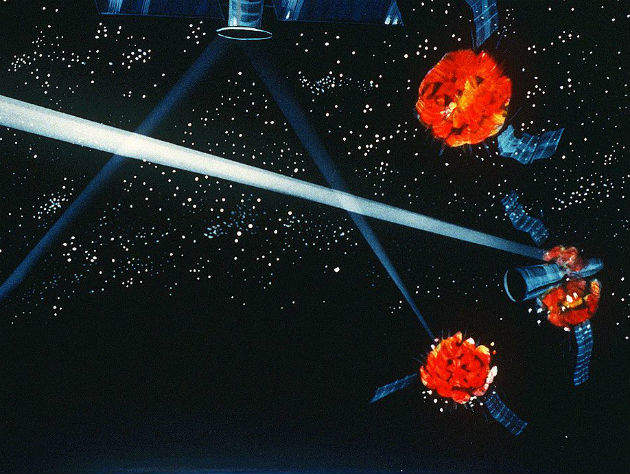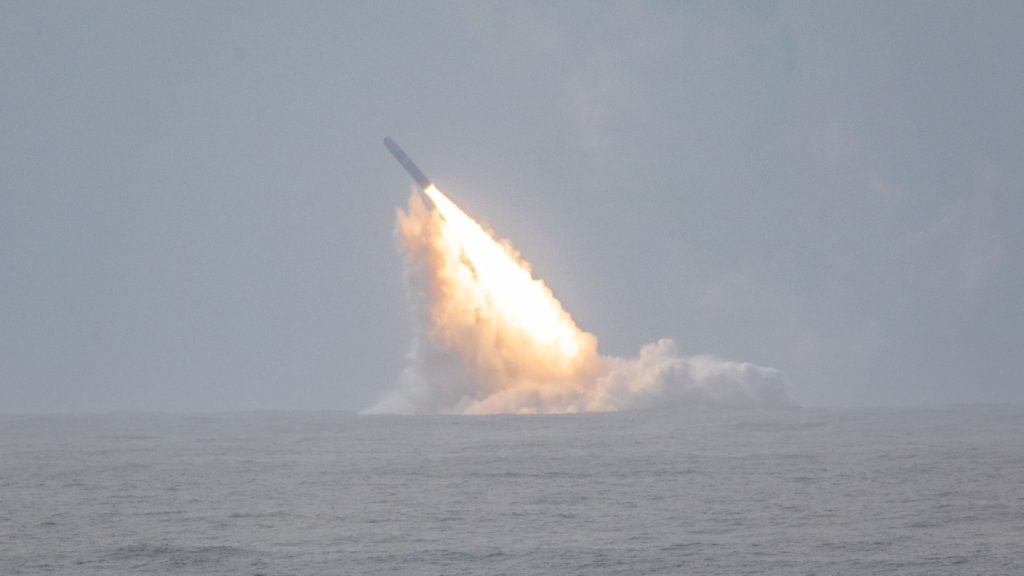

Of all the potential approaches to energy weaponry, arguably none has generated more interest than laser technology, with Britain’s Ministry of Defence (MoD) recently awarding a £30m contract to produce a demonstrator system in the 50kW class which could ultimately see fully weaponised lasers entering service within ten years.
The MoD’s association with the concept of battlefield lasers began almost as soon as the technology emerged back in the early1960s, and it seems Britain even deployed – but did not actually use – them during the Falklands War. A letter written in 1983 by the then Defence Secretary Michael Heseltine to the Prime Minister of the day, Margaret Thatcher, and released in 2013 under the 30 year rule, describes the weapon as being “designed to dazzle low-flying Argentinean pilots attacking ships”.
It is thought to have been inspired by an earlier idea, dreamt up during the British defence of Suez in 1941, using high-powered searchlights to protect Royal Navy vessels against enemy aircraft. If everything goes according to plan, the latest version will be able to do very much more than dazzle.
According to Dragonfire UK, the aptly-named consortium charged with turning this time-honoured sci-fi staple into a battlefield reality, the aim of this programme is to mature the key technologies for a British high energy defensive laser weapon system, and bring a significant step change to the UK MoD's capability. The ultimate objective is to produce a weapon that can destroy or disrupt targets such as missiles or hostile UAVs mounting swarm attacks, with the level of damage inflicted being dependent on the dwell time of the striking laser’s beam.
See Also:
Some of the biggest names in defence are working to make it happen. Headed by world-leading missile systems firm MBDA, the Dragonfire team also includes Arke, BAE Systems, GKN, Leonardo (formerly Finmeccanica), Marshall Defence and Aerospace and Qinetiq.
How well do you really know your competitors?
Access the most comprehensive Company Profiles on the market, powered by GlobalData. Save hours of research. Gain competitive edge.

Thank you!
Your download email will arrive shortly
Not ready to buy yet? Download a free sample
We are confident about the unique quality of our Company Profiles. However, we want you to make the most beneficial decision for your business, so we offer a free sample that you can download by submitting the below form
By GlobalDataTechnology demonstrations
The series of planned demonstrations will include initial detection and engagement planning, handover to the beam director, pointing and tracking, engagement, battle damage assessment and follow-on engagement capability. Britain’s new weapon will also have to meet a number of broader criteria before it can be considered for eventual deployment, including the ability to track targets under all weather conditions, long-term, sustained reliability and operational safety.
A combination of technologies will need to be brought together to achieve all of this, principally coherently coupled laser technology to maximise the power output and quality of the beam, and a high precision optical pointing system using advanced image processing and tracking algorithms. The culmination of the capability demonstrator programme (CDP) will be the engagement of a wide range of representative targets in both land and maritime settings in 2019.
After this, a technology demonstrator programme is expected to follow to capitalise on the gains made in order to shorten the time to fielding a credible laser DEW capability. It is also likely that the MoD will make use of the experience and results gained during the CDP, and particularly from the demonstrations, to help shape future investment and procurement decisions for close-in weapons system (CIWS) capability, especially to counter emerging potential threats such as UAVs and fast attack craft.
Endless firepower
Dragonfire anticipates that laser technologies will be operationally mature from the early to mid-2020s. Not only will that potentially put Britain at the forefront of laser DEW development, but as Dave Armstrong, executive group director for technical and UK managing director of MBDA, observed when the contract was awarded, it also “advances the UK towards a future product with significant export potential”.
That could turn out to be very good news indeed. According to forecasts from industry analysts Research and Markets, the global market for DEWs will grow at a CAGR of 28.9% between 2016 and 2021, reaching $24.45bn by the end of the period, and there is little reason to believe it will stop there.
The appeal of laser weapons is obvious. Once the development and procurement costs have been paid, and the requisite energy generation systems put in place, an operational DEW has three unassailable advantages over any conventional projectile firing weapon that relies on gunpowder or rockets. It offers speed-of-light shots at a very low cost and it never runs out of ammunition; and there are no munitions transportation or storage requirements to meet either.
Although there are still some technical issues to resolve, half a century on from the laser’s invention, it seems the technology could finally be about to translate some of this long-awaited promise and head along the road to real-world, in-service capability.
Shifting focus
There was a time when DEW research really did border on the realms of sci-fi. Back in the 1980s, the nuclear ballistic missile threat drove the Strategic Defence Initiative – the so-called ‘Star Wars’ programme of the Reagan years – which promised the kind of orbiting laser cannons that would not have been out of place on Darth Vader’s own Death Star.
Since then, of course, things have changed; asymmetric conflict has become the order of the day and the swarm is the new danger, shifting the focus of energy weapon R&D towards the kind of laser systems now being developed by Dragonfire.
At first glance, it seems hard to imagine that even in large numbers, small, slow-moving and relatively simple drone ‘flying bombs’ could pose much of a serious threat to a modern warship. The sophisticated defensive systems on board, coupled with vastly superior protection and armament should make any conflict a distinctly one-sided affair – or so you might think. According to US Navy analysis, however, the reality could be rather different. In one scenario considered by the Naval Postgraduate School, a destroyer was simultaneously attacked from several directions by five to ten commercially available off-the-shelf UAVs.
Swarming success
The problems surrounding UAV swarms begin with detection. The tiny radar signature of each individual UAV means that by the time they are spotted, they are likely to already be too close for the warship to target them with missiles or its five-inch gun. In addition, the jammers forming part of the integrated Aegis air defence system are not currently set up to disrupt drone controls. Although that could be rectified in future, for the moment it means that there is only a short window between detection and impact for the CIWS to engage them.
For the purpose of the US Navy analysis, the vessel was assumed to be armed with two Phalanx radar-guided 20mm rapid-fire Gatling guns and six supplementary heavy machine guns on deck. In more than 500 simulations featuring eight attacking drones, an average of 2.8 successfully made it to detonate their hypothetical explosive payload against the ship, and even with bolstered sensors and CIWS, at least one always survived to impact. Increase the swarm size and the results from the warship’s perspective get even worse, as only the first seven or eight are ever likely to be successfully destroyed.
How effective the Dragonfire laser will ultimately prove to be against such threats obviously remains to be seen, but if it does eventually lead to the development of a fieldable DEW, it could be a real game-changer and give the UK’s armed forces exactly the kind of high-tech advantage they need.






